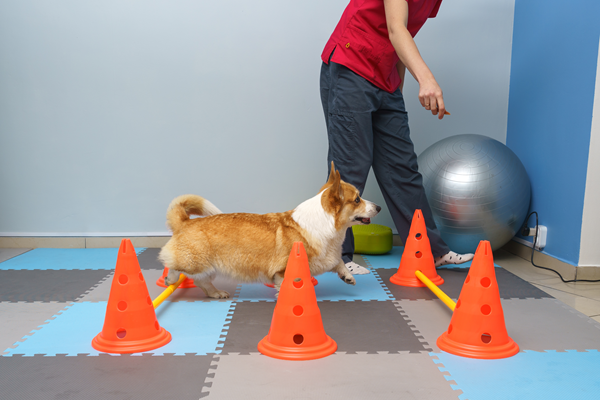
How does arthritis affect dogs?
Canine arthritis, particularly osteoarthritis, is a degenerative joint disease (DJD) that affects a dog’s mobility by causing joint inflammation, pain, and stiffness. As dogs age, DJD can significantly impact their quality of life, leading to a declining spiral of reduced activity, weight gain, mental distress, and increasing pain.
What is guided therapeutic exercise?
Guided therapeutic exercise is customized, low-impact activity designed by veterinary rehabilitation therapists to help arthritic dogs. Unlike regular exercise, therapeutic activities focus on gentle movements that improve flexibility, mobility, and strength without causing further joint damage. These exercises are tailored to each dog’s specific condition and may progress gradually based on their response.
How can therapeutic exercise help dogs with arthritis?
Therapeutic exercises can help reduce joint pain, improve muscle strength, and increase flexibility, ultimately allowing dogs to move more comfortably. By strengthening the muscles around the joints, these exercises reduce the load on the affected areas, which helps alleviate discomfort. Exercises like walking around poles or using underwater treadmills are particularly effective because they provide low-impact resistance that strengthens muscles without overstressing the joints.
Additionally, techniques like range-of-motion exercises, stretching, and even balance training can enhance a dog’s overall mobility. Over time, these exercises can decrease joint stiffness and improve the dog’s endurance.
What are some common therapeutic exercises for arthritic dogs?
- Range-of-motion exercises: These exercises can be passive (guided by a therapist) or active (encouraging the dog to move), helping increase joint mobility.
- Strength-building exercises: Simple activities like sit-to-stand or walking over low obstacles can improve muscle tone and support the joints.
- Hydrotherapy: Walking on an underwater treadmill or swimming may be recommended, as the water’s buoyancy reduces joint stress while still providing resistance to build muscle
- Proprioception training: These balance exercises, like standing on a wobble board, help improve body awareness and prevent further injury
The Importance of Working with a Veterinary Rehabilitation Therapist
While some exercises might seem straightforward, working with a professional ensures they are done correctly and at the right pace. Veterinary rehabilitation therapists are trained to create tailored exercise plans based on the dog’s condition, monitor the dog’s progress, and adjust the routine to prevent overexertion or injury. Without proper guidance, well-meaning owners might inadvertently worsen their dog’s arthritis through excessive or inappropriate exercise.
